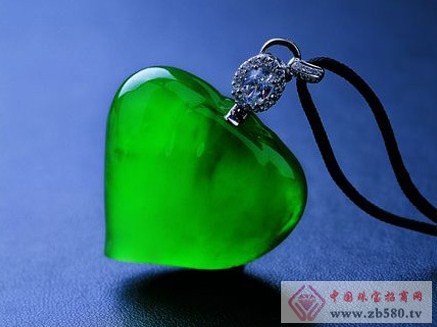The common terminology of jadeite is kind, water, color, work, and jade. The water of jadeite seems to be simple and refers to transparency, but in fact it contains a lot of things worth exploring. Here is a detailed explanation of the relationship between the water head and transparency of the jade.

Water is the head of water. According to the length of the light that can pass through the interior of the jade, the industry calls it “a few points of waterâ€, usually one to three minutes, and the three-point water is the most transparent. The water penetration depth is about 3 mm. Divided water and three-part water have a transmittance depth of about 6 mm and a diameter of 9 mm. Or, to put it another way, it is easier to understand that a jade with a thickness of 3 mm is completely transparent. Similarly, dichotomous and three-divided water refer to jade with a thickness of 3 mm and 9 mm, respectively, which is completely transparent. The emerald with a thickness of less than 1 mm is poorly translucent or opaque. It is commonly known as water difference and water dryness. The length of the water head is generally estimated by the naked eye. The state of transparency reflects to some extent the length of the jade water, that is, the water of the jade can be measured by transparency.
Water is closely related to transparency. Transparency refers to the degree of light transmission of jadeite. The national standard of jadeite classification divides the transparency of jadeite into five levels: transparent, translucent, translucent, micro-transparent and opaque. Transparent: Most of the light is permeable, and the interior features of the jade are clearly visible. Sub-transparent: Most light is permeable, and the interior features of the jade are visible. Translucent: Some of the light is permeable, and the interior features of the jade are still visible.
The water of jadeite is a kind of integrated state in which light is transmitted inside the jade, and is formed by multiple disordered cross-reflection and refraction of crystal grains. It seems to be hazy, deep, and layerless. It is a combination of transparency and species and foundation. . The water that can be produced when the emerald is old, the grain is small, the structure is tight, and the foundation is pure, is an optical phenomenon more than transparency. Water is the result of the synthesis of various factors. It is the result of the action of light in the interior of jade. Transparency is the basic element of water. Without the cooperation of species and foundation, pure transparency will not be converted into water. If there is water, it will be transparent, and the transparency will not necessarily have water.
Emerald water is a state in which the transparent or translucent stagnation is like a dark wave in a lake, and it seems to be static and surging. Green watery, green and sturdy, elastic, like a marginless. Colorless and watery, it is as clear as a stream.
Therefore, transparency is the basic condition for jadeite with water. There is no need for water for transparency. Many transparent or translucent jadeites have no water. In disguise, the essence of jadeite water is not the fact of transparency. The understanding of transparency as water is one. A common saying is better understood, but not scientific enough, and the two cannot be equal.
Shaoxing Guanglin Textile Co.,Ltd , https://www.sxguanglin.com
![<?echo $_SERVER['SERVER_NAME'];?>](/template/twentyseventeen/skin/images/header.jpg)